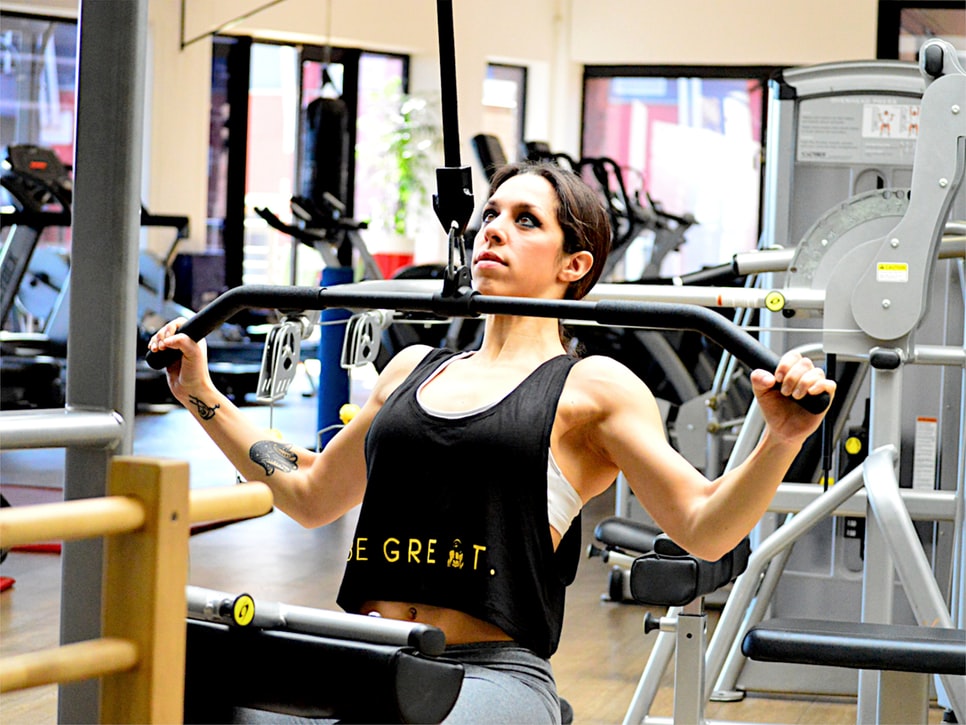The key to cluster sets is the rest periods. With clusters, sets are broken into subsets, so you take short breaks along the way to recover strength. Cluster sets are a relatively new technique, but one that has risen in popularity in bodybuilding as well powerlifting. Rest-assured, they allow you to get more reps with the same weight as a straight set. The Barbell investigates cluster sets.
CLUSTER SETS EXPLAINED
REST-PAUSE
Cluster sets are similar to but different than rest-pause reps. Rest-pause is a technique, associated with Mike Mentzer and high-intensity training, to push sets beyond full-rep failure.
◼️ If you reach failure on a set of shoulder presses at 10 reps, for example, you then rerack the weight but keep your hands set on the bar.
◼️ Wait 10-15 seconds.
◼️ Go again. Maybe you get two more reps.
◼️ Wait 10-15 seconds.
◼️ Go again. And maybe you get one more rep.
Therefore, rest-pause has not only allowed you to eke out three extra reps, but those reps were all at near-failure, and instead of one failure point (at 10 reps), you’ve had three (at 10, 12, and 13 reps). So, you’ve extended your set by adding the sort of near-failure reps that best stimulate growth.
CLUSTER SETS
Cluster sets share with rest-pause the concept of intra-set breaks, but they differ because they have only one true failure point (at the very end). Let’s return to our example of shoulder presses done with a weight that limits you to 10 continuous reps. Cluster sets break your set into subsets. So, in our example, you’ll perform three subsets of four reps each.
◼️ Do four reps, rack the weight.
◼️ Wait 15-20 seconds.
◼️ Do another four reps, rack the weight again.
◼️ Wait 15-20 seconds again.
◼️ Do a final subset of as many reps as possible, typically getting three to five.
If you get four reps on each of the three subsets, you’ve done 12 reps total in an extended sequence with two breaks instead of 10 continuous reps.

CLUSTER SET ADVANTAGES
Because you should always be able to get more reps with cluster sets versus a typical set, clustering is an excellent way of breaking through strength plateaus. If you were stuck on 225 pounds for 10 reps, cluster sets should allow you to get at least 12 reps (4+4+4) with that same 225 or 10 (4+3+3) reps with 245 pounds.
No, you haven’t actually grown stronger with the 225 for continuous reps—not yet anyway—but with cluster sets your mind and muscles grow accustomed to totaling more reps with the same weight or the same reps with more weight. And you break through plateaus.
Because cluster sets are a relatively new training technique, the science of their effectiveness is nascent. A review of the few studies researching muscle growth with cluster sets (CS) versus traditional sets (TS) was inclusive but promising and concluded: “Further studies are warranted investigating the great potential of CS for muscle hypertrophy as it allows a higher training volume than TS for the same absolute load, or by lifting heavier absolute loads for a given number of repetitions.”
Volume is an important component of muscle growth, and cluster sets are a great way to pound out a few more reps each workout without reducing the resistance, or you can total the same number of reps while increasing the resistance.
HOW TO DO CLUSTER SETS
EXERCISE SELECTION
Cluster sets can be performed with most resistance exercises as long as you can easily and safely pause the action by re-racking or resting the weight(s). Racking and un-racking a weight can drain strength and energy you need for the next subset. So, the best exercises are ones that require no re-racking (pulldowns or deadlifts, for example) or can easily be re-racked (barbell curls or Smith machine shoulder presses, for example).
REPS PER SUBSET
As for the number or reps in each subset, this requires a bit of planning. Subsets should usually be 3-5 reps. So, if you can get eight continuous reps, break your three subsets into three reps each. If you can get 10 continuous reps, try for three subsets of four reps each. And if you can do 12 continuous reps, aim for three subsets of five reps each.
In each of those cases, push your final subset to failure. That may allow you to eke out one or two more reps than planned on that final subset. Partly, this is dependent on how long you rest between subsets. We recommend 15-20 seconds for each of the two rest periods.
Some people prefer to do more reps in the earlier subsets than the latter, so they can push subsets closer to failure. So, you may want aim for 5-4-4 reps or 5-4-3 instead of 4-4-4. Experiment with different rep combinations to see which works best for you.
FREQUENCY
The science is not yet in on this, but you probably don’t want to do all-cluster set workouts all the time. Instead, use cluster sets as an occasional way of upping intensity and breaking strength barriers by clustering only the final sets of appropriate exercises.

CLUSTER SETS & REST-PAUSE
To super-charge intensity, combine cluster sets with rest-pause. How does this work? Let’s return to our shoulder presses and that weight you can hoist 10 continuous times. A cluster set rest-pause combo would go something like this:
◼️ Get four reps.
◼️ Wait 20 seconds.
◼️ Get four more reps.
◼️ Wait 20 seconds.
◼️ Go to failure and get four more reps.
◼️ Wait 10 seconds.
◼️ Get two more reps before failing.
◼️ Wait 10 seconds.
◼️ Go to failure one last time, and let’s say you eke out just one final rep.
With 60 seconds of intra-set breaks, you’ve totaled 15 reps, 50% more than you could do without pausing. Combining cluster sets and rest-pause is a double-barreled assault, so utilize this on only the final set of an exercise. But it just goes to prove that resting may be the key to smashing barriers, boosting growth, and truly cranking up your intensity.
CLUSTER SET TRAINING TIPS
◼️ Divide your reps into three subsets and rest 15-20 seconds between subsets.
◼️ Set the weight down or re-rack it at the end of each subset, but remain prepared to go again soon.
◼️ Because of the rest breaks, cluster sets allow you to total more reps than you could with continuous reps.
◼️ Subsets should be in the 3-5 rep range.
◼️ Push only the final subset to failure.
◼️ Cluster sets are great for mentally overcoming strength plateaus.
◼️ Cluster sets can be combined with rest-pause to dramatically boost intensity.
















































